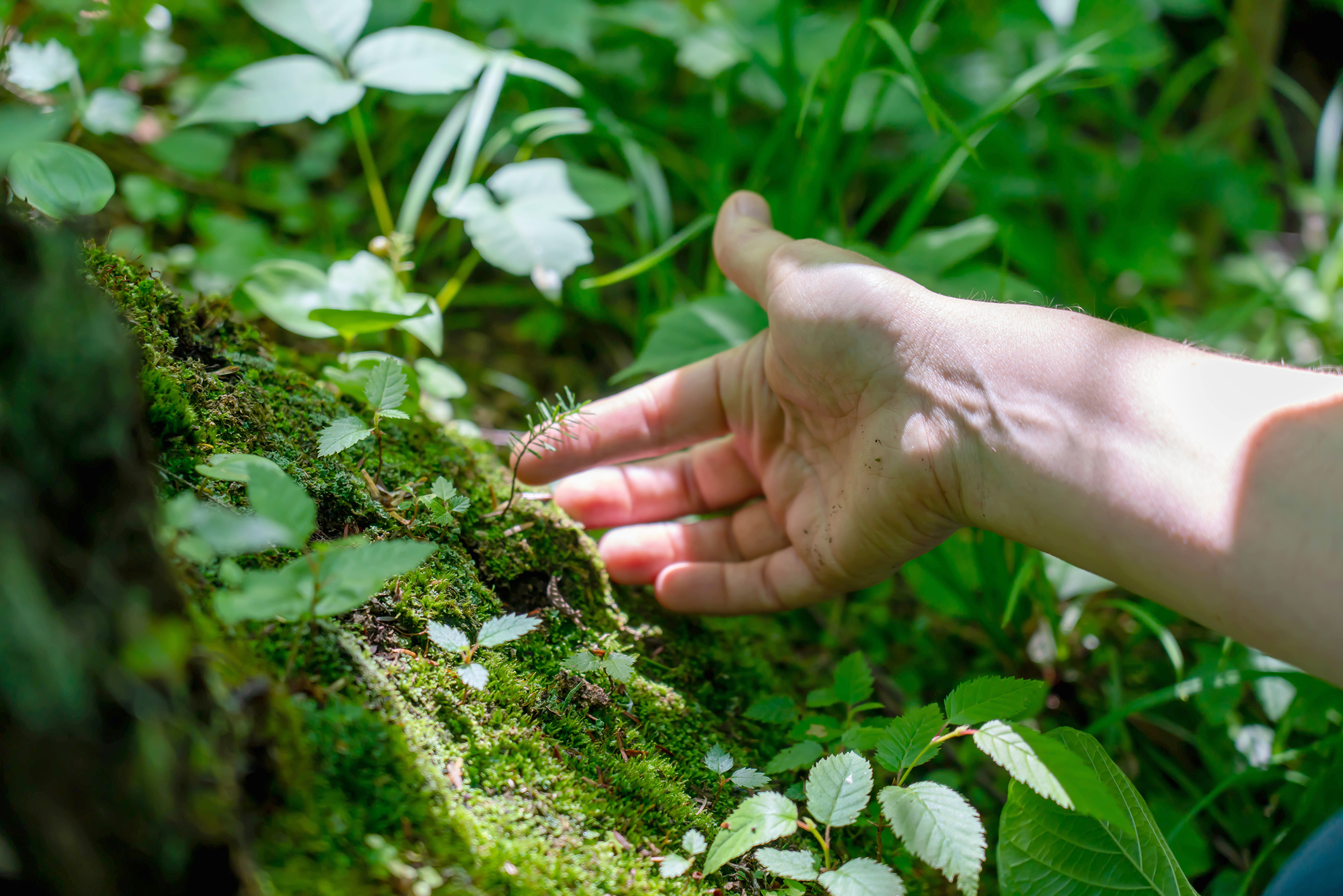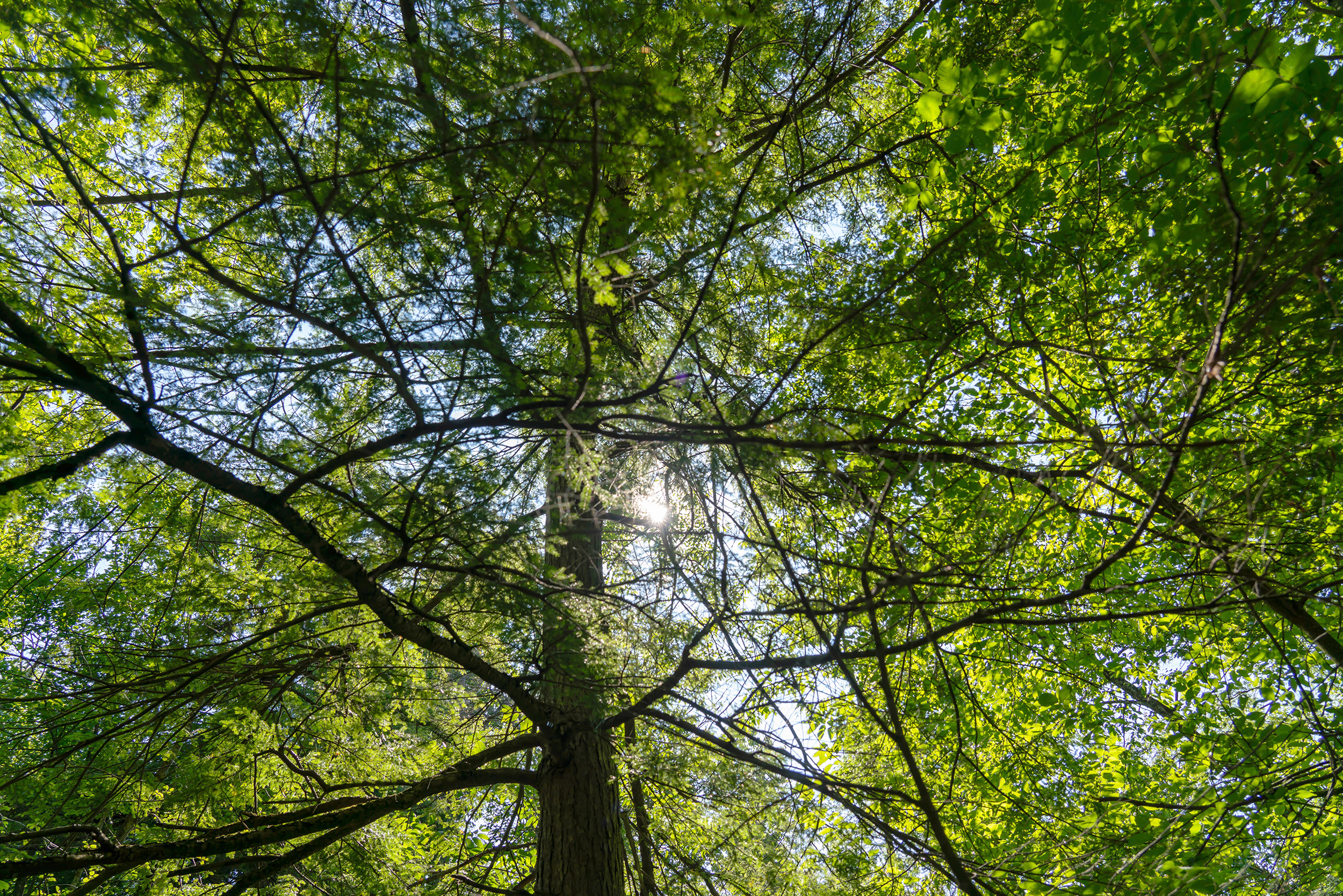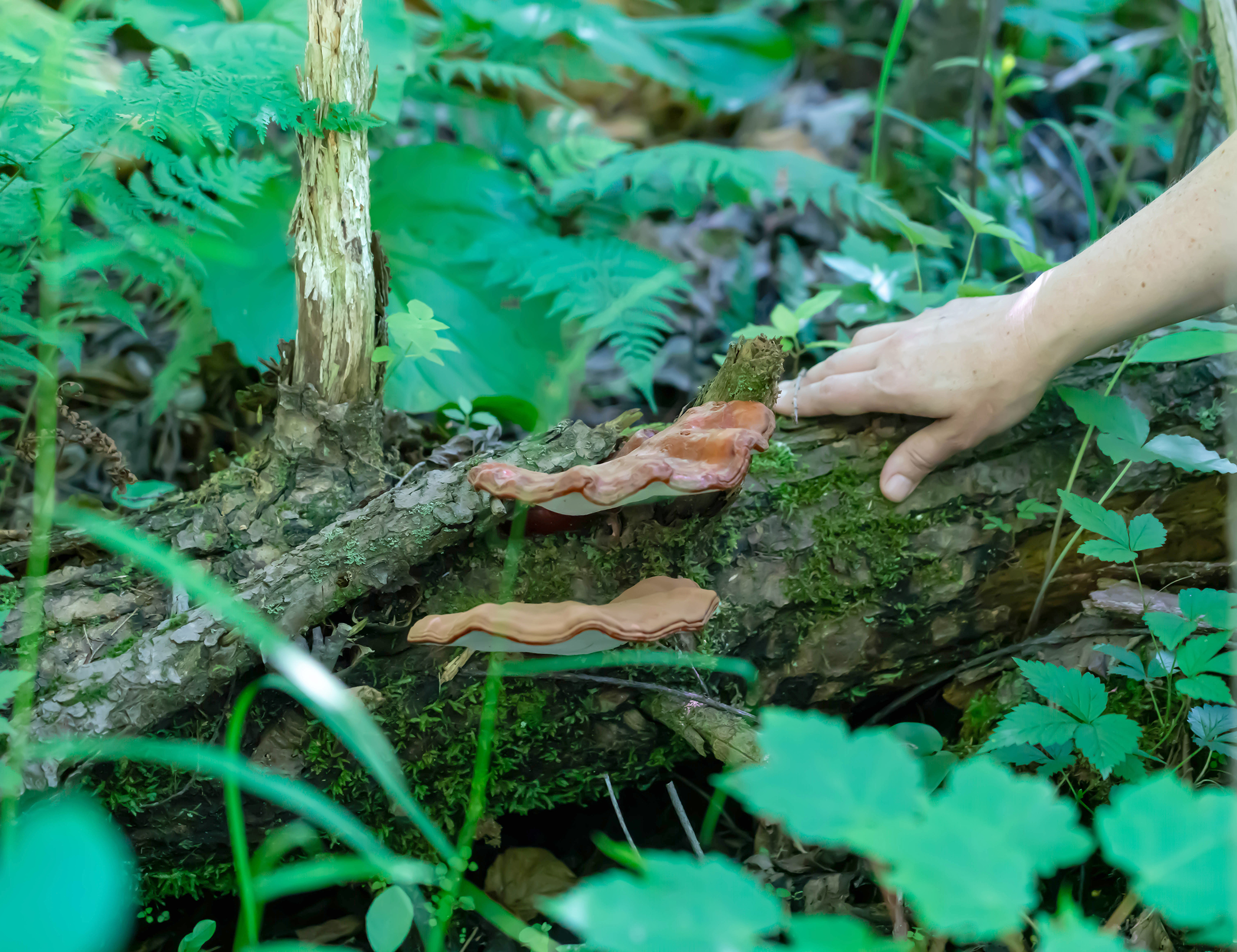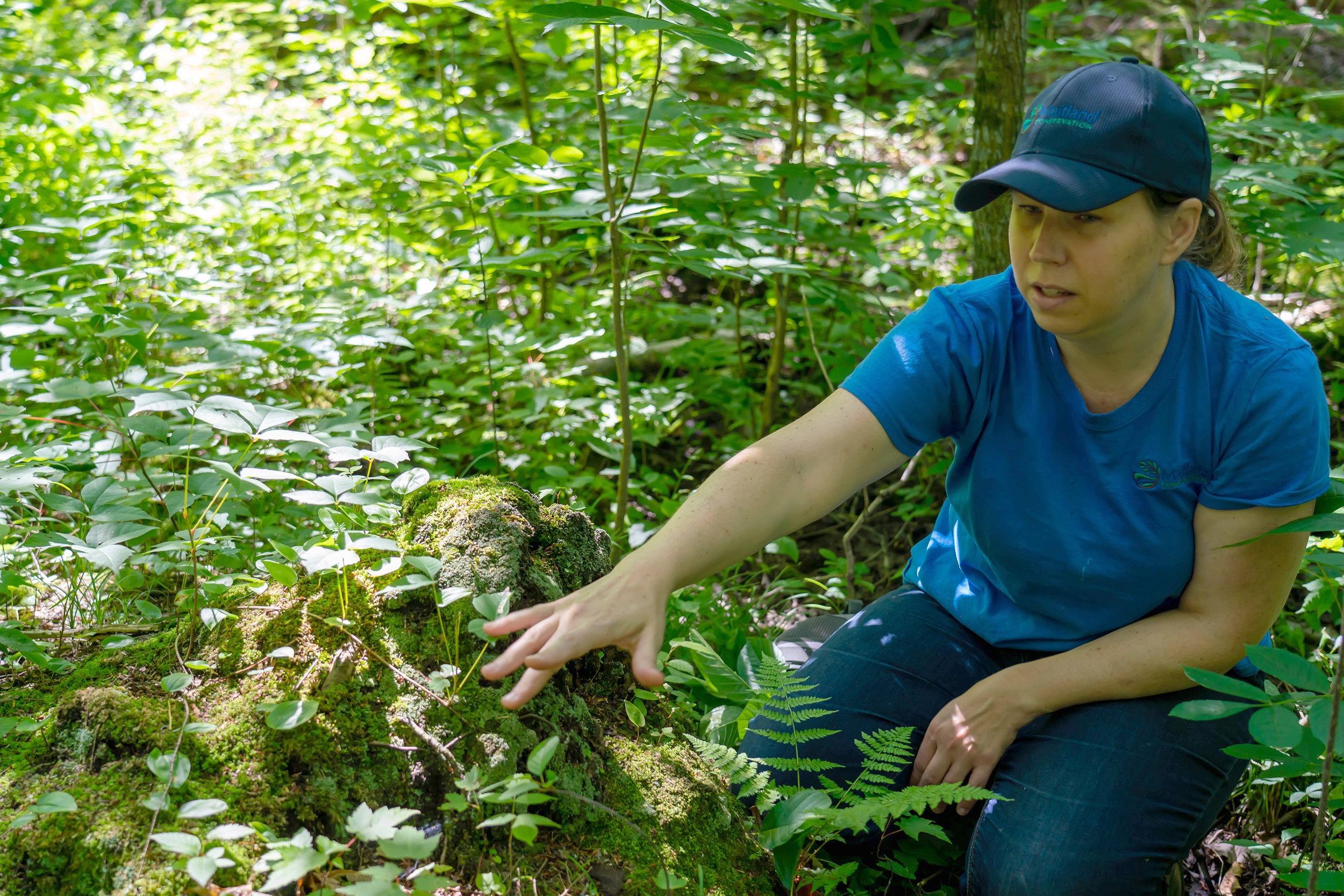MAITLAND VALLEY – Serious warning signs from local forests in the Maitland Conservation (MC) coverage areas have Watershed Ecologist Erin Gouthro concerned, with more than 80 per cent of the wooded plots showing signs of a “disturbance signal.”
Gouthro began the forest health study in 2021, working with some private landowners in the region to learn more about what is happening. The results so far have not been great, with more than 52 per cent of the study areas seeing more than four types of disturbances.
Gouthro and her team completed assessments on 103 forest plots on 42 private properties across the watershed. Research is being undertaken in partnership with the University of Toronto Forestry Conservation.
Insects, disease, pathogens, trails, tree cutting, and storm damage are some of the culprits, caused by several risk factors like a lack of diversity, opened canopies, and invasives, Gouthro said in a report to MC.
A case study performed in North Perth found that 89.51 per cent of the forest ground vegetation consisted of invasive or non-native plants, with 10.47 per cent being native to the area. A mere 0.02 per cent of the area had tree seedlings growing.
The Emerald Ash Borer (EAB) is responsible for many of the dead trees that Gouthro noticed during the study.
She said these dead trees currently make up 15 per cent of the standing biomass, but “this will increase to approximately 30 per cent, as EAB sweeps the watershed and kills the remaining ash.”
Gouthro reported that the private woodlots studied had “Forest Health Disturbances.”
Other data from the woodlots studied:
– 87 per cent of plots had damage due to insects and disease;
– 69 per cent of plots had tree cutting;
– 51 per cent had the presence of invasive plants; and
– 46 per cent were experiencing trees uprooted and destroyed by wind.
Degraded forests don’t regenerate, Gouthro said, and she wants people to stop thinking things like, “Well, it’s green; it will grow back.”

A baby elm growing in a baby tree nursery at the St. Michaels Road Forest owned by Maitland Conservation on July 15. (Cory Bilyea photo)
Also, it is crucial for these types of studies to be done more frequently.
“So, the big problem that we’ve seen is that there has been this giant gap between the last time we did a focus study,” Gouthro said. “We need more focused attention, we need more focused resources coming in to just knowing about our own landscape so that we don’t have these huge gaps.
“Our forests are really being impacted by anthropogenic influence, they may have started a continent away, but the world all of a sudden has become very small. So having boots on the ground, eyes on the ground is very important.”
Gouthro spoke about how vital this information is to landowners, to let them know the size and health of their trees and if they will continue to regenerate and be a forest or if they will get into what she calls a “stuck pattern.”
“Part of this study is about identifying those stuck patterns, what they are, how the forest becomes stuck, what are the factors that cause this, whether it’s emerald ash borer or taking canopy out,” said Gouthro. “Maybe we have an invasion of understory plants and then maybe we log the forests, but we don’t take all the crowns out, like we’re not chopping the crowns up or shredding the crowns to help the forest regenerate.”
Those series of actions can cause stuck points for the forest, which then doesn’t have baby trees, or “tree nurseries,” instead you might have grasses or glossy buckthorn, or you might have something else,” she said. “And that forest, once the trees get old and die, or they get a pest or a disease, that forest is stuck into that pattern, and it will not regrow.”
The study methodology used by Gouthro and her team from MC has a focus area of 400 metres, which allows them to have a detailed look at everything going on in the area, along with aerial photography that helps to see what the patterns are in the forests.
“We can make some conclusions and create some stewardship and management directions, some options for the care and management of our forests so that we have them in 100, 200, 300 years.”
The second part of the study, being conducted this year, concentrates on land owned by Maitland Conservation.
Gouthro invited Midwestern Newspapers to accompany her and MC’s Forest Health Technician Matthew Shakespeare to observe the study of a forest outside of Brussels.
The area the team chose was about 200 metres in, as the crow flies, but with no established pathways and plenty of glossy buckthorns, the term bushwhacking seems more fitting for this entrance.

The canopy in the Maitland Conservation Forest on St. Michaels Road outside of Brussels is healthy and full, a critical component in a healthy, vital forest according to Watershed Ecologist Erin Gouthro. (Cory Bilyea photo)
“Glossy buckthorn is a non-native tree that was introduced to Canada from Eurasia approximately 100 years ago. It can grow as tall as seven metres. Once used for landscaping, this tree has now become an invasive species,” a publication from Nature Conservancy Canada said.
“This species produces leaves early in the spring and keeps its leaves late into the fall. The dense thickets outcompete native vegetation.”
Gouthro said the thought process didn’t include things like “invasive species” in the 40s and 50s when the buckthorn was brought to this country to use as hedgerows, which she said was common practice in England.
“In England, these hedgerows are ecologically very important to their ecosystem, they have birds associated with them,” said Gouthro. “But when they brought it over here and applied that approach, they didn’t understand.”
Unfortunately, possibly due to its alkalinity, buckthorn is not on the local wildlife’s diet, so the possibility of having deer or other wildlife mow through the non-native tree is not a viable option in combating its spread.
Most likely they would eat everything else and leave the buckthorn, Gouthro said.
Controlled burns are an option for removing dense undergrowth, and planting new growth with greater density is one approach that is on “the high end of the management spectrum in plantations, to overwhelm these with aggressive management, but they are not always an approach that people are willing to do, can do or is appropriate,” Gouthro said.
“So, it’s really working with careful knowledge, with ecological approaches, that when we undertake stewardship we’re doing the best practices and our understanding is common.”
The entire frontage of the forest was choked with glossy buckthorn and long grass, making entry very difficult. But, deeper into the woods, things started to look a lot less clogged, and signs of regeneration became more apparent.
Gouthro noticed that this particular forest didn’t have a large amount of Ash trees which contributes to the healthy canopy, which in turn aids the middle and low growth, creating an environment more prone to regeneration.

Fungi sprouts on a dead tree at the St. Michaels Road location of a Maitland Conservation Forest on July 15. These mushrooms are an important part of the ecological system that regenerates the forests. (Cory Bilyea photo)
She explained what can happen if there is an open canopy, “If I can show you some more examples, like the reed canary grass when we walked in, [this] is another culprit, it will get into a forest. And when our canopy is open, it is so thick that you don’t get any of these little regenerations, you don’t get any of these little, little seedlings.”
Referring to the remains of a tree stump she was standing next to, Gouthro explained the nuances of what she called a baby tree nursery, with all of the components that make it work as a naturally balanced system.
Dark marshy soil, decaying wood, and a healthy spread of moss provided the perfect nursery for a baby elm tree, some baby ash trees, several red maples, plus violets and poison ivy (which is not all bad, this plant also provides medicinal health benefits). Plenty of insects came by, making frequent stops to do their work.
“And you’ll notice where they’re growing, they’re growing in this rich soil that’s been broken down by the moss. It’s creating perfect conditions, these plants, literally the perfect seedling mix,” she said.
Gouthro explained why the moss was so amazing to see.
“Not only is it critical…but what we have is the [tree] roots coming out, they are naturally lifting themselves up and they are aerating the soil. The moss is working in harmony with the roots, and the insects work with them to create and build the soil.
“So, if we build things back, if we restore things that don’t include these elements, it’s like building a house without a sink, or building a house without a staircase, you’ve got the house, but you don’t have functional dynamics within it.”
There was garlic mustard present in the vicinity, which brought up the subject of using Indigenous Knowledge Keepers and perhaps learning more about things like snake root, which is used for some traditional medicinal purposes, but Gouthro thinks this plant could also help to change the soil so it would be less inviting to the fast-spreading wild mustard plant.
Gouthro hopes to utilize this form of Indigenous knowledge in her studies and is currently looking for a local expert from the Indigenous community to help her expand her knowledge of the forests in this region.
She explained that every forest has a specific nuance to it, and understanding the connections is key.
“I’ve been listening to the bird’s overhead, so I have a good understanding of what the birds are,” explained Gouthro. “We want to do work on rodents to see what they are like, so that we understand these foundational blocks. And we keep the foundational blocks together so that the forest can keep itself in motion. We don’t want the forest to get in a pattern where they’re stuck.”
Explaining that many of the birds were in rest mode during our visit, having completed their nesting, birthing, and eating, now preparing for their journey south in the winter, Gouthro noted that some species, like the chickadee, were not migratory birds and still around.
She tilted her head back and, with a haunting, guttural bird call that she explained mimicked a predatory visitor, attracted several chickadees chirping their familiar sound and a woodpecker came by to see who was in their forest.
The future of forests in southern Ontario is critical to humans, Gouthro said. More frequent studies need to be completed with consistent monitoring, and more work needs to be done to ensure that this essential part of our ecosystem survives.
“Don’t get me wrong, planting trees is good, but we have to understand the forests, we have to manage the forest we have.”
The trees are crucial, but the soil is an essential part.
“It’s the soil microbiome that is really important for regulating our environment; they are key environmental regulators,” said Gouthro. “They’re critical for our mental well being, and spiritual well being.”
Added Gouthro, “I think people in our community are really hard hit by looking at, driving past the forest and 30 per cent of it is dead, it bugs me, I think it bugs other people, too.”
She said a more active approach is needed.
“And that’s not what we’re doing. We’re taking an approach where we assume if we walk away, it’s green, it will grow back, well, maybe in 1542. But when you have a situation where your forests are impacted by five or more disturbances, they need active stewardship to ensure that the pressure is taken off them so that they can do their forest goodness, right, they can grow their babies, they can have a nursery on the floor.
“So that all these little babies will be here in 300 years when we’re all gone. This is our legacy on this forest floor,” she said.
“If we destroy this forest floor, we destroy the legacy we leave to our children. This community destroys its legacy to its children. I’m not sure that’s something I’m comfortable with.”
Gouthro acknowledged that there are landowners who care and want to learn and do the right thing.
“They need to know what to do. And they need to understand what specific actions we can undertake,” she said.
“But we need research and monitoring in a collective approach in order to supply that. We need to support it through our municipalities. We used to support our county forest initiatives.
“We need to support our conservation authorities so that we can do this work and help our landowners because we work for our landowners at the end of the day.
“This is all for the public. This is the public repository, the public bank account of nature.”
The results of the second part of this forest health study should be available in 2023.



